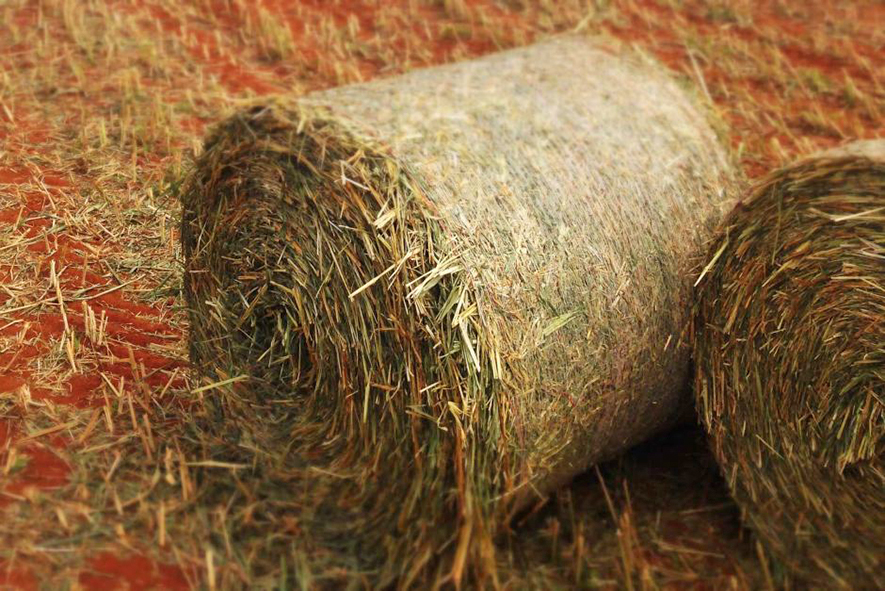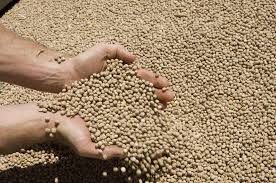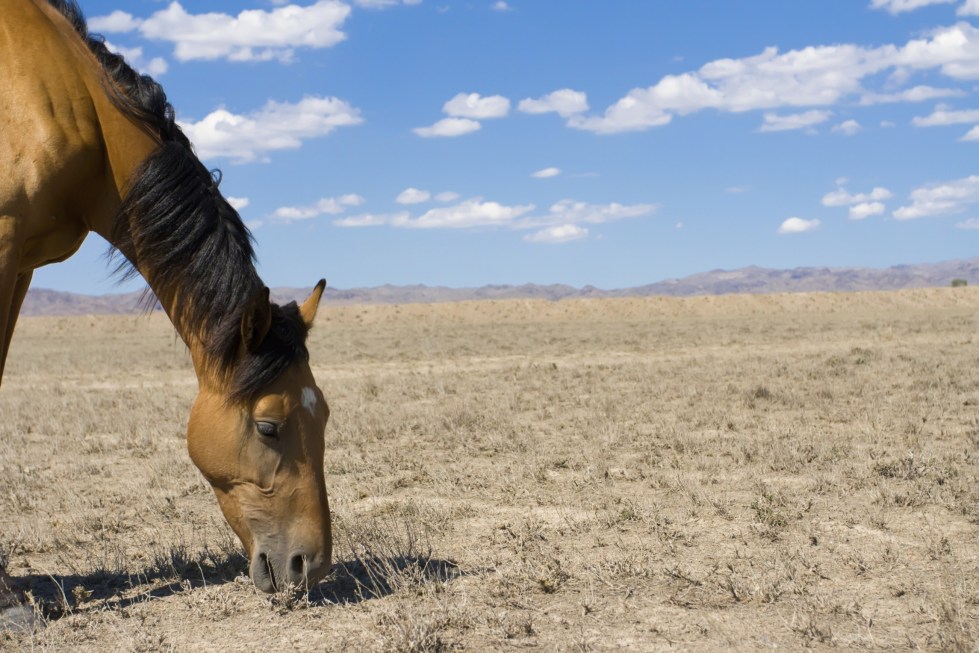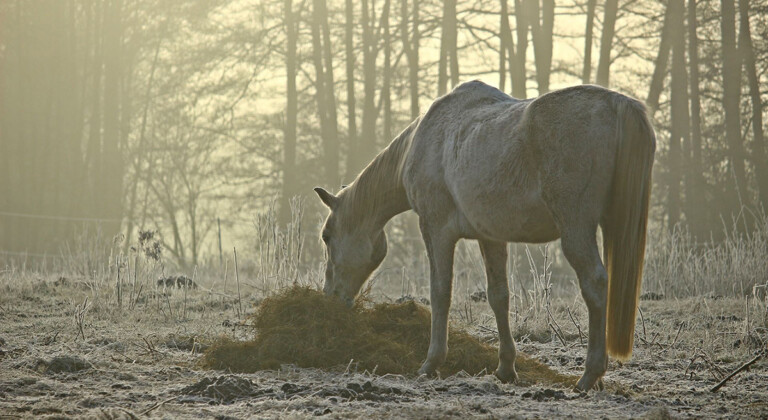Even though parts of New South Wales and Queensland received a bit of rain in the past few weeks we are still in serious drought. In this month’s HorseVibes magazine, Dannii Cunnane looks at ways to keep our equine friends healthy through these dry times.
The ground is cracked, dry and separating, there hasn’t been a really decent downpour in months, despite a bit of dust-settling rain. Grass for horses is sparse on the ground and the local hay supplier is now rationing out their dwindling supplies and it won’t last.
This is every horse owner’s worst nightmare, but some owners right across Australia are currently living it. While we cannot make it pour with rain to bring on the spring grass (oh boy, if we could!) we can give tips on feeding horses when supplies are running low.
What are the liabilities?
During drought, it’s important to understand that the owner is responsible for the horse’s condition. If there is little feed and water, you cannot do nothing by law this is not an option. It is your legal responsibility that horses in your care do not starve to death or become distressed during the drought. While some horses fare better than others, the only legal body score a horse can get to in drought conditions is two no lower.
This means that you may have to supplement feed sources for your horse so its condition will not drop below the body score of two.
Be Proactive Create a Plan
While difference circumstances will come into play here, such as how many horses you have on a block of land, we ll keep this generic. We do stress that every owner should have a drought plan though even if you agist.
The drought action plan is about thinking for the future – taking into account that your horse may not always have access to lush grass and soft hay, thinking about managing the land you have for the future. Are you able to sow grass seeds during the next downpour? If you rely on a dam or creek for water, what will you do if they dry up? Are you able to bring in water from an outside source and place it in some troughs? Can you strip graze so that grass in other parts of the paddock can grow while horses only have access to grazing in a certain area? This will reduce trampling of precious grazing areas and allow paddocks to be rested. It’s all about the scenarios and actions that you ll be required to take should the worst happen as well as thinking of the future and encouraging sustainable practices.

Feeding the Horse in Drought
What you do with your horses will also be a factor in managing their feed during a drought. You cannot expect a performance horse to maintain its performance and body weight if its usual feed is diminishing without being supplemented accordingly. To ensure that feeding your rations will meet the targets of what you do with each horse will mean that you know and understand the horse’s nutritional needs for maintenance, exercise, performance or growth.
Estimating a horse’s body weight is difficult if you don’t have access to scales, but we recommend the girth measurement be used as a good indication. (See Table 1 girth measurement table: source: Agriculture Victoria).
Keep in mind that there are also a few factors to consider, including the horses overall health and whether it is a lactating or pregnant mare, a young horse, an aged horse or a stallion. Once you have an estimate of your horse’s current weight, you can then determine the amount of nutrients your horse will need to keep its current body score.
One of the biggest problems in drought is a lack of forage. If you have been well prepared, you may have a good store of hay to help you through, but in extended periods of drought, there will likely be a time when you run out.
Horses need at least one per cent of their body weight as dry forage each day. That’s five kilograms for a 500 kilogram horse. This is non-negotiable, and falling below this amount has its associated dangers in the form of colic, laminitis, gastric ulcers and loss of condition.
What is forage?
Traditionally the forage allowance is made up of hay, pasture and chaff. It is very important to provide sufficient bulk and enough fibre to keep the digestive system moving along.
During times of drought, the nutritive value of the roughage is less important than the physical bulk of it, as poor quality, low energy
roughage can be supplemented with hard feed to fill the gaps.
It may be more economical to buy large square or round bales of hay rather than the small bales and to bulk buy where possible to ensure a good supply as well as getting the best possible price. But where hay is extremely difficult to source, you may need to look to alternatives to supply a good chunk of the fibre and roughage in the diet. Care must be taken not to feed mouldy or uncured hay, but other than that, even sub-standard long stem grass hay will do where nothing else is available. Unconventional forages such as sorghum stubble, pea straw and good quality silage can be used where it is available. Silage can be a very good and nutritious feed for horses, it is high in energy, so can be fed in small amounts diluted with other hay or forage types. Be careful to buy only what can be used in a few days, to prevent mould, and introduce horses to it slowly to allow the digestive system to adapt. There is a risk of botulism with silage that has not been made with horses in mind so care needs to be taken to ensure that the bale has not been pierced and has been cured correctly.
Be very careful when using unusual types of forage and be aware of those areas of the diet that will need to be balanced by feeding them. If you require assistance or advice on using a type of forage with which you are unfamiliar, make efforts to contact a horse nutritionist for some professional advice and assistance.
What if forage is unavailable?
In terms of bucket feed, there are a couple of high fibre ingredients that can be added to increase the bulk of the diet and supplement limited hay intakes:
Grain and seed hulls: the polished hulls of oats, lupins, soybeans and sunflowers can become available during times of drought and some can be used to increase the roughage content of the diet. While many of these by-products have little digestible fibre or dietary energy, they do add bulk and can replace some of the chaff that would usually be used to bulk out the hard feed ration. Hulls can be dusty, so must be dampened prior to feeding and may need the addition of a little molasses to increase palatability and intake. They should be mixed well with the grain and chaff mix. Oat hulls should be avoided since they are sharp and can pierce the horse’s gums and cause mouth ulcers and infection. Rice hulls should also be avoided as they can cause impaction colic in horses.
Bran and pollard: A traditional feed for horses, bran and pollard has a couple of problems to do with the high phosphorus and low calcium levels. Bran has very little digestible energy, has less fibre than oats on a volume basis and is only really useful to add volume to a ration. Pollard has a little more energy but has even lower fibre levels than bran and needs careful balancing for calcium. If bran and pollard are to be used as a bulker, then a calcium
supplement such as di-calcium phosphate should be added to balance calcium levels and they should not be used for extensive periods of time.
Common Health Risks Associated with Drought Feeding
Commercial fibre mixes: These are available in the form of sweet-feeds with a high proportion of added chaff. The sweet-feeds have a vitamin and mineral premix added to help fill the gaps left by straight hay and grains, and the advantage is that whilst local supplies of chaff may dwindle, larger manufacturers will usually have the buying power to maintain supplies of chaff, making these feeds a good alternative where supplies of chaff and hay are poor.
Chaff replacements: There are several chaff replacement products that you can use to bulk your horses feed. These include Hygain Fibressential, SpeediBeet, MaxiSoy and similar feeds. Make sure that if the product you have purchased requires water, the appropriate amount and standing time is adhered to. Ensure that these products are locked away from equines that may go exploring and help themselves feeding these items without water may cause major health issues.

These types of commercial feeds can be used to partly replace some of the hay or chaff that would normally be fed. Check the fibre content on the bag tag, and chose a feed with a fibre content of around ten to fifteen percent or more if the sole aim is to increase fibre and bulk. Be careful to adhere to the manufacturers recommended feeding rates, and if you have any questions about maximum feeding rates for your type of horse, contact the manufacturer for guidance.
During drought, you may need to make frequent changes to your horses diet as different ingredients become unavailable, or a new source of an ingredient is found. Constantly changing the diet, using unusual ingredients that you are not familiar with and feeding more hard feed to make up for the lack of forage imposes some health risks on your horse. The major risks to be aware of are colic, gastric ulcers, laminitis and worms.
Colic: To minimise the risk of colic, try to provide as much roughage as you are able, and provide as much energy in the form of fibre and fat as possible, thus minimising the need for grains. Introduce all new feeds and ingredients including different hay and chaff types over a period of 7-10 days, gradually phasing out the old whilst slowly increasing the new ingredient. If you are having to feed a large amount of the required energy as hard feed, make sure you feed little and often. Feed no more than 2.5kg of hard feed (excluding chaff) in one meal. This may mean that you have to provide three or even four meals per day in order to reduce the risk of colic. Provide plenty of fresh water, whatever the cost. If you have run out of water from your dam, you will need to find an alternate source, or move your horses to an area with good water supply.
Gastric ulcers: These result from feeding a diet high in grains, and from the stress of work or travel. Again, to help prevent ulcers, try to minimise grains, and feed small meals with plenty of forage. Bulk out the meals with chaff or one of the chaff substitutes mentioned to slow down consumption and allow as much hay as you can ration.
Laminitis: Horses are at high risk of laminitis with drought feeding practices. Making all changes very slowly, feeding small meals and using digestible grains such as oats or heat processed grains will help to reduce the risks of starch overflow to the hindgut.
Worms: Dry conditions do not favour larval survival, so worms tend not to be quite so prolific in horse pastures during drought but if there is a lack of forage horses may start to eat droppings and graze rough areas of the paddock to satisfy their need for forage. Maintain a vigilant worming program during drought to help horses get the most out of their feed and remove droppings from the paddock or yard regularly.
Wood chewing: you may notice your horse eating tree bark, or your fences if you are not providing sufficient forage in the diet. The easiest way to prevent and remedy this problem is to make more forage available either with hay or chaff, or offer a vitamin, mineral and salt alternative.

When the Drought Breaks
When the rain comes it’s a relief, but the problems do not end with the first downpour. Paddocks that have become dry and dusty will take a period of time to fully recover, and until then, the dangers of fresh new growth to your horse will also have to be carefully
managed.
The temptation to put horses straight into a paddock that has just become lush with new growth will be there, but don’t do it. But as with all dietary changes, the introduction to new pasture must be done slowly to avoid the risk of colic and laminitis. If possible, start by allowing just a couple of hours each day at the new pasture. Not only will this help the horses to get used to the change in diet, but it will allow the pasture to recover a little too.
For the first month build up to a period of time during the day at pasture, but take the horses off, or rotate to a different paddock for the rest of the time so that fragile new pastures will not become depleted right away. If you have the facilities to strip graze your pasture by using temporary fencing, then start this practice right away, and allow the worst portions of your pasture to fully recover before subjecting them to the stress of grazing.
Where can I go for help?
If you are currently unsure of how to manage your horses during a drought, contact your states Department of Agriculture for assistance. They are able to assist with drought action plans and offer sound advice to land owners and horse enthusiasts.




Thanks for mentioning how you should have a plan for feeding your horse in the event of a drought. My wife and I need to buy some horse food soon. We’ll find some supplies that will suit our horse’s needs.
Thanks for your comment Chris! We really do aim to provide relevant articles that can help all horse people. Very pleased we could help you plan your feeding options.